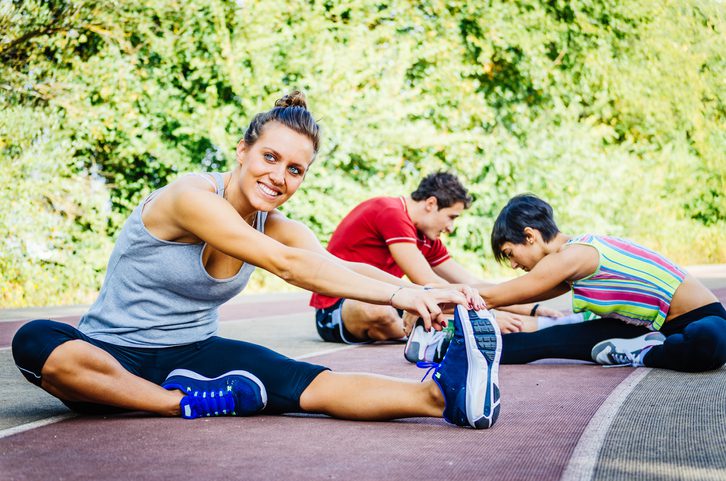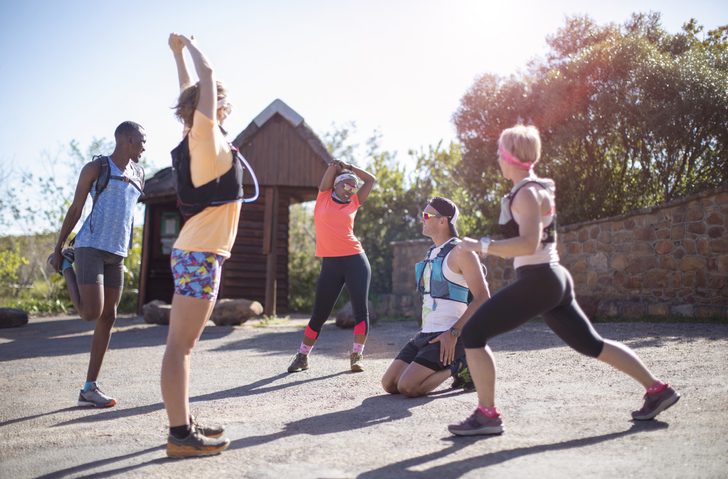I’m a triathlete – do I really need to warm up?
Does it really matter that I’m five minutes late to practice?
 Photo by:
Getty Images
Photo by:
Getty Images
As someone who works with athletes in-person many times a week I see this all the time – people showing up late to the session and jumping right into the main set, with maybe 50 m of swimming or 400 m of running before they’re kicking it in high gear. Sure, this is frustrating for me and the other athletes in the session, as trying to shoehorn a late-comer into an already flowing group of athletes can disrupt those who were there on time, but it is also sub-optimal for the late athlete themselves.
Sometimes these athletes will tell me that they “feel fine” after only one or two minutes of exercise before the main set. While it is true that your body is capable of jumping pretty quickly from rest to full power – after all, we’d probably be extinct if we’d needed a five- to 10-minute warmup before we were ready to deal with the dangers of the ancient savannah where ancestors evolved – you can more optimally and efficiently perform if your body is given a chance to ease into exercise. This plays out in several ways.

First off, during a warm-up your body literally warms up. While your core temperature is pretty stable at approximately 37 C, your muscles and joints are not held at this temperature – there’s a reason we take our temperature in our mouths and not just by placing a thermometer against our calf. During a warm-up, the parts of the body that increase in temperature are the specific joints and muscles that we use. This increase in temperature has all sorts of beneficial effects. It increases the elasticity of our muscles and tendons, increases the ability of our hemoglobin to transport oxygen and decreases the viscosity of the fluid that surrounds our joints, making them glide more smoothly. All this makes your body function more efficiently and reduces the risk of injury.
The benefits of a warm-up do not end there. Starting off your exercise at a controlled, steady effort also allows your body to slowly increase the oxygen supply as oxygen demand increases in the working muscles. Keeping the demand and supply growing in parallel means that you are going to use less anaerobic metabolism right from the start of your workout. This means less lactic acid and other nasty waste products that lead to discomfort and fatigue. Basically, if you warm-up well before you work hard, you’ll get tired more slowly!
Get more out of your swim workouts with these simple swim etiquette tips
A final benefit of a warm-up is less about your physiology and is often underappreciated. Spending some time warming up gives you a chance to observe and connect with your body. You can check if everything is feeling “normal” and get in tune with your breathing and the rhythm of your movements. It also gives you chance to shift your mental focus from the outside world to the “in training” world. This type of “mindful” use of the warm-up can make you more connected to your body and performance. Not only is this likely good for reaping better mental health benefits of exercise, it will make you a better athlete overall as well, since you are giving yourself a chance for your subsequent workout performance to be more targeted and focussed.
Now I am not naïve, I know that this article will likely not change those chronic late-comers into the punctual athletes that every coach wishes they were. But, for you on-time people, hopefully it’ll let you feel a bit smug about all the benefits you’re getting by being at practice five minutes early. Maybe this’ll compensate for the irritation when the latecomer gets put into your lane.
Darian Silk is a triathlon coach and Clinical Exercise Physiologist based in Toronto. Read more about Darian here or email him at darian@teamatomica.com. You can also check out his TrainingPeaks profile here.
